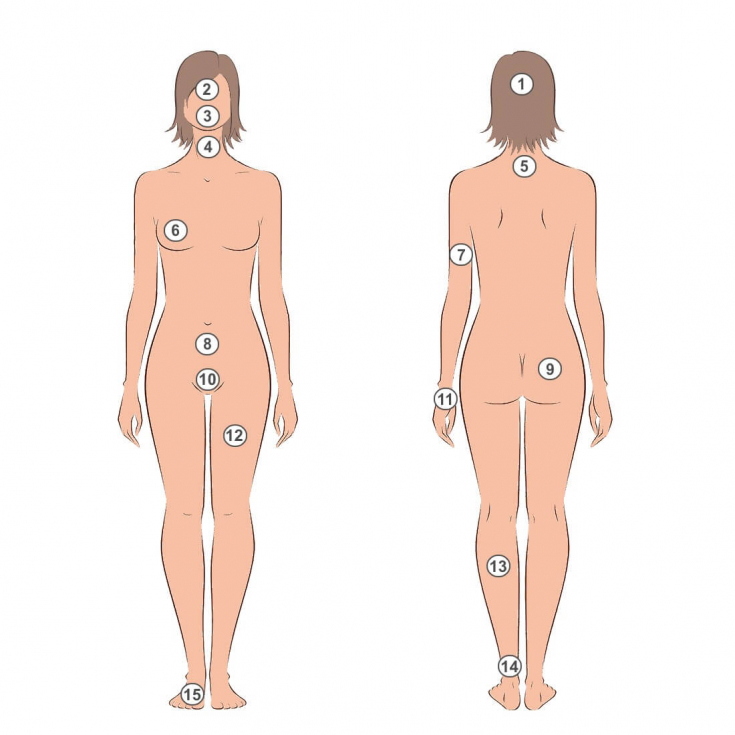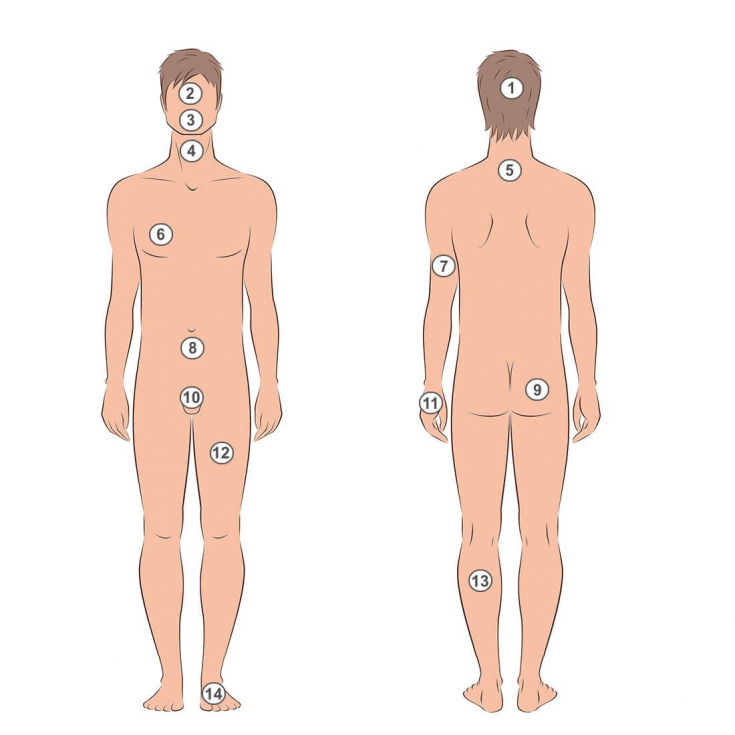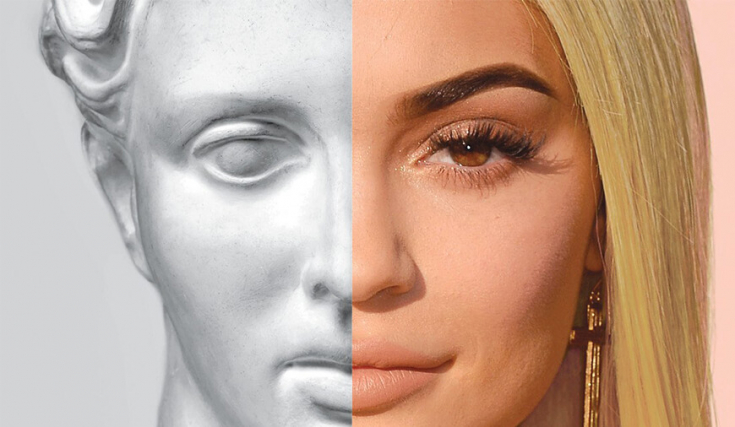To say that the pursuit of beauty is about feeling better is only partly true. Attractive appearance is one of the means of obtaining admiration that we need. It is not surprising that for many this is the main reason for life.
The editors of estet-portal.com decided to understand the psychological aspects, why we are dissatisfied with certain parts of the body and how to get rid of this problem.
- What do men and women most often find unattractive in appearance
- Plastic surgery: "help" nature
- Obsessive physical dissatisfaction: body dysmorphia
What do men and women most often consider unattractive in appearance
Buttocks, thighs, chest, musculature, facial features, height. In practice, every physical characteristic can be a cause for dissatisfaction. And if in the past women were given the prerogative to consider attractiveness fundamental, today this common phenomenon is completely outdated. Discontent spares neither men nor women.
Subscribe to our page on Instagram!
Is there any part of your body that you don't like and could change? If so, you might find it among the ones listed below.
While describing external characteristics, many women find fault with one or more of these parts:

1) Hair: sparse, too thin, "brittle".
2) Face and head: wrinkles on the forehead, around the eyes and mouth; thin lips; the nose is long, thick or irregularly shaped; acne or other skin rashes; high or prominent forehead; arch of the eyebrows or mild cheekbones; wide oval; sagging chin ears; "stick out" or too large.
3) Mouth: jagged, large teeth, yellowish; too high or dark gums.
4) Neck short and/or thick.
5) Shoulders and shoulder blades: broad, protruding, lean, small.
6) Chest: small, saggy or asymmetrical, with stretch marks, with halos or oversized or dark nipples.
7) Arms: too bulky or full.
8) Abdomen and thighs: voluminous, thick or flabby.
9) Buttocks: voluminous or slightly pronounced.
10) Genitals and anal area: labia of the vagina hanging, too protruding or fleshy; the contour of the anus is dark in color.
11) Wrists: too large or "masculine".
12) Hips: voluminous, short, with stretch marks or cellulite.
13) Caviar: too pronounced.
14) Ankles: too wide.
15) Legs: too long or short; unusually shaped fingers and nails.
Many men report dissatisfaction with one or more of the following:

1) Hair: sparse or thin, bald patches, baldness.
2) Face and head: wrinkles on the forehead, around the eyes; acne; long, thick or irregularly shaped nose; high or prominent forehead; too thick or sparse beard; thick, fused eyebrows; wide oval; pronounced jaw; elongated or sunken chin; ears "stick out" or too large.
3) Mouth: jagged, large teeth, yellowish; too high or dark gums.
4) Neck: short or thick, pronounced Adam's apple.
5) Shoulders: narrow or drooping, stooped.
6) Chest muscles: ill-defined or flabby.
7) Arms: too hairy, thin, not very muscular.
8) Abdomen and thighs: protruding or full, not tucked up.
9) Buttocks: too bulky, flabby, not toned.
10) Genital organs: penis too small, curved or ugly; sagging scrotum.
11) Brushes: small or too hairy.
12) Thighs: thin, short, thick or not very muscular.
13) Calves: weakly defined, thin.
14) Feet: small or with ugly toes or nails.
One way or another, each of us found some kind of flaw in ourselves. Some use their flaws as uniqueness and difference from others, others hide with makeup, clothes, accessories. But the main thing in this is not to look perfect, like everyone else, but to accept yourself and your shortcomings. If this does not happen, both sides suffer – physical and psychological. From the physical side – a person resorts to plastic surgery, sports, hair extensions or hair removal. From a psychological point of view – low self-esteem, depression, complexes and social withdrawal.
Plastic surgery: "help" nature
From adolescence, we begin to attribute to the body the ability to attract or repel others. Developmental psychology has long explored the reasons why aesthetic appearance is so important in this phase of development, finding connections between self, body, and self-esteem. Evolutionary biology has the simplest answer. During puberty, there is a natural need for reproduction. But, of course, this requires a partner. Therefore, it is important to have an attractive appearance, because it increases the chances of finding him.
However, appearance is not just a teenage concern. This is also the concern of adults who, if they have any in their appearance, resort to aesthetic surgery.
According to the data, more than $20 billion is spent on cosmetic treatments worldwide every year, and this figure is constantly growing.
Also people often resort to rhinoplasty and blepharoplasty, but the real boom in aesthetic medicine is associated with the use of botulinum toxin and hyaluronic acid.

When plastic surgery doesn't solve the problem
Body image is the result of a comparison between your physical ideals and your shape ratings. The smaller the discrepancy, the better your body image will be.
Self-esteem and body image are not the same thing, but they influence each other. Those with high self-esteem tend to consider themselves more attractive than those with low self-esteem. Good body condition, in turn, affects overall self-esteem in general.
Having a physical handicap can make life worse. And sometimes the body image actually becomes negative due to a single feature: a certain shape of the nose, excessive volume of the buttocks, baldness. Then surgery and cosmetic medicine can really help. Defect fixed, problem solved.
However, in many cases the problem is more complex. If a physical defect is not the real cause of suffering, its elimination will not guarantee happiness. Unfortunately, on the contrary, if the dissatisfaction is caused by the inability to accept oneself and the obsessive need for approval, as soon as the defect is eliminated, another will be found, which in turn will become the object of discontent and will be pointed out as the cause of all ills.
This is why many of those who go to plastic surgeons come back again and again. With often cryptic results. In this case, plastic surgery is only a temporary means of dealing with shortcomings. The main problem sits deeper – in the mind.
Obsessive physical dissatisfaction: body dysmorphia
Body Dysmorphophobia is an obsession with the idea of having one or more physical defects that others do not see as so pronounced and are not perceived as a disadvantage. Convinced that they are serious, the person with body dysmorphic disorder is sure that others must also take them as such. Thus, a woman with body dysmorphic disorder may not be able to tolerate the shape of her hips, buttocks, and breasts. The man has a constant worry about too high physical, height, shape or size of the genitals.
Dysmorphophobes also use repetitive actions or coercion towards a perceived defect. For example, many men with the nagging thought of losing their hair spend hours in front of the mirror combing their hair and reflecting on how much the situation has worsened of late. Many women struggling with wrinkles spend every morning putting on makeup to hide them as much as possible.

Some Bodysmorphophobes constantly ask friends, relatives or partners for confirmation of the obviousness and seriousness of their "flaws". However, the responses received are only temporary.
The more deeply rooted the belief that you have a serious physical defect, the more likely it is that your quality of life will be compromised. Dysmorphophobe can spend so much time on coercion that he can no longer perform his daily duties, take care of his family, or go to work. He may also forego most of his clothing or avoid showing his body even to his partner.
The American Psychiatric Association (AAP) states that body dysmorphism affects 1.7-2.5% of the population, with little variation between countries.
Most people with body dysmorphia end up with surgery or cosmetic surgery. The AAP estimates that this disorder affects 9-15% of patients requiring dermatological treatment, 3-16% of those undergoing cosmetic surgery, and 10% of those requiring maxillofacial surgery. 8% of those who go to the dentist for aesthetic dental services. But the suspicion is that if less stringent diagnostic criteria were considered, the percentages would be much higher.
The world of show business is constantly releasing new "idols", taking a place on the altar of public recognition thanks to the perfect appearance. At the same time, new technologies come to the aid of us mere mortals.
Social media, Facebook and Instagram, can give the world the image of themselves they need, just the right light and a certain perspective, Photoshop is the rest.
But the main value lies in love and self-acceptance, it is necessary to consciously approach the issue of surgical or cosmetic intervention, in which many sections of our site will help you.





